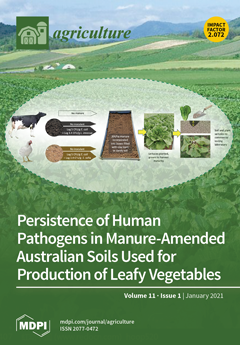Constructing a scientific and quantitative quality-assessment model for farmland is important for understanding farmland quality, and can provide a theoretical basis and technical support for formulating rational and effective management policies and realizing the sustainable use of farmland resources. To more accurately reflect
[...] Read more.
Constructing a scientific and quantitative quality-assessment model for farmland is important for understanding farmland quality, and can provide a theoretical basis and technical support for formulating rational and effective management policies and realizing the sustainable use of farmland resources. To more accurately reflect the systematic, complex, and differential characteristics of farmland quality, this study aimed to explore an intelligent farmland quality-assessment method that avoids the subjectivity of determining indicator weights while improving assessment accuracy. Taking Xiangzhou in Hubei Province, China, as the study area, 14 indicators were selected from four dimensions—terrain, soil conditions, socioeconomics, and ecological environment—to build a comprehensive assessment index system for farmland quality applicable to the region. A total of 1590 representative samples in Xiangzhou were selected, of which 1110 were used as training samples, 320 as test samples, and 160 as validation samples. Three models of entropy weight (EW), backpropagation neural network (BPNN), and random forest (RF) were selected for training, and the assessment results of farmland quality were output through simulations to compare their assessment accuracy and analyze the distribution pattern of farmland quality grades in Xiangzhou in 2018. The results showed the following: (1) The RF model for farmland quality assessment required fewer parameters, and could simulate the complex relationships between indicators more accurately and analyze each indicator’s contribution to farmland quality scientifically. (2) In terms of the average quality index of farmland, RF > BPNN > EW. The spatial patterns of the quality index from RF and BPNN were similar, and both were significantly different from EW. (3) In terms of the assessment results and precision characterization indicators, the assessment results of RF were more in line with realities of natural and socioeconomic development, with higher applicability and reliability. (4) Compared to BPNN and EW, RF had a higher data mining ability and training accuracy, and its assessment result was the best. The coefficient of determination (R
2) was 0.8145, the mean absolute error (MAE) was 0.009, and the mean squared error (MSE) was 0.012. (5) The overall quality of farmland in Xiangzhou was higher, with a larger area of second- and third-grade farmland, accounting for 54.63%, and the grade basically conformed to the trend of positive distribution, showing an obvious pattern of geographical distribution, with overall high performance in the north-central part and low in the south. The distribution of farmland quality grades also varied widely among regions. This showed that RF was more suitable for the quality assessment of farmland with complex nonlinear characteristics. This study enriches and improves the index system and methodological research of farmland quality assessment at the county scale, and provides a basis for achieving a threefold production pattern of farmland quantity, quality, and ecology in Xiangzhou, while also serving as a reference for similar regions and countries.
Full article





